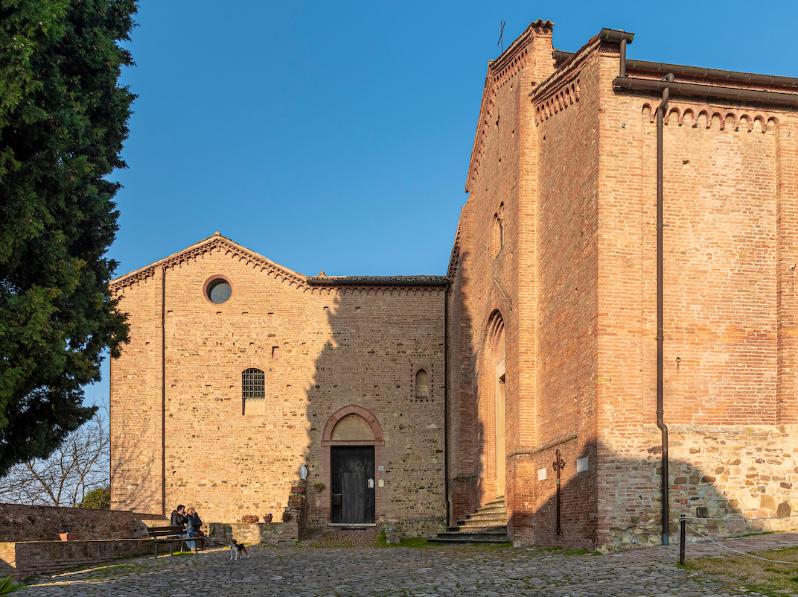Home / Itineraries /
Monteveglio: the charm of the Abbey and the ancient villages
Updated on 03 December 2023

Monteveglio entered European history when its inhabitants repelled Emperor Henry IV, who wanted to avenge the famous humiliation suffered by Matilde di Canossa. Part of the municipality of Valsamoggia, it is considered a Matildic place, that still enchants visitors with its beautiful fortified village and the Abbey, set in a fascinating natural context and enhanced by the paths that cross the Regional Park to which it gives its name. The itinerary proposed here is an opportunity to immerse yourself in the medieval atmosphere of the place and admire its landscape, embellished by evocative gullies.
The medieval village
The enchanting village rises together with the very ancient Abbey of Santa Maria Assunta on the top of a hill overlooking the valley. The castle's origins date back to the year 1,000, and of the ancient fortification remain the fine arched gateway, from which the village is still accessed today, the patrol walkway that overlooks a short section of the walls and a massive castle tower with characteristic swallowtail battlements. Next to the tower stands the ancient House of San Benedetto, while on the left is the 17th-century-looking bell tower, which had the function of a rallying call for the community's arengo. Also worth seeing are the Oratory of Santi Rocco e Sebastiano, a small religious building erected by the inhabitants during the plague epidemic of 1631, and the nearby old municipal seat.
Church and Abbey of Santa Maria Assunta
Proceeding along the cobbled road, among the old stone houses, we come to the complex of the Church and Abbey. The former, built in 1092 in Romanesque forms over an older sacred building, has a 15th-century bell tower. Worth seeing inside are the 10th-century apse and crypt. Of interest are the two cloisters, one 15th-century (with double loggia) the other older, which overlooks the plain in a panoramic position. Also of note is the beautiful wooden crucifix placed above the high altar, dating from the 15th century and recently restored, as well as the 17th-century organ. The large monastic building, in Romanesque style, was founded by Matilde di Canossa in the 11th century to thank the citizens of Monteveglio who had confronted and stopped the imperial army. The church and abbey of Monteveglio were restored in the last century by architect Giuseppe Rivani. An intervention that eliminated the posthumous structures that had accumulated over the centuries, uncovering the original architecture.
Oliveto
Returning toward the town, not far from the center, is the ancient and charming village of Oliveto, which stands on a hill with sweeping views of the Samoggia valley. The walk through the village is a succession of ancient monuments. The remains of the 11th-century castle, the oratory of Santa Maria delle Grazie, already in existence in the year 1000 and recently restored, the bell tower attached to the ancient parish church of San Paolo, which lacks a façade and whose presence is reported from the year 1033 and which houses an altarpiece attributed to the 17th-century Bolognese painter Elisabetta Sirani. Also worth noting is an interesting medieval building called the Ca' Grande dell'Ebreo built in the early 1400s that was the seat of the Jewish community and the first bank in the entire area, and the Bronzina, a medieval building that housed the hotel of the Grandees of Spain and was also a lazaret and eventually a bronze foundry.
Duration: 24 hours
Interest: Art & Culture
Target audience: family/friends-single/couple